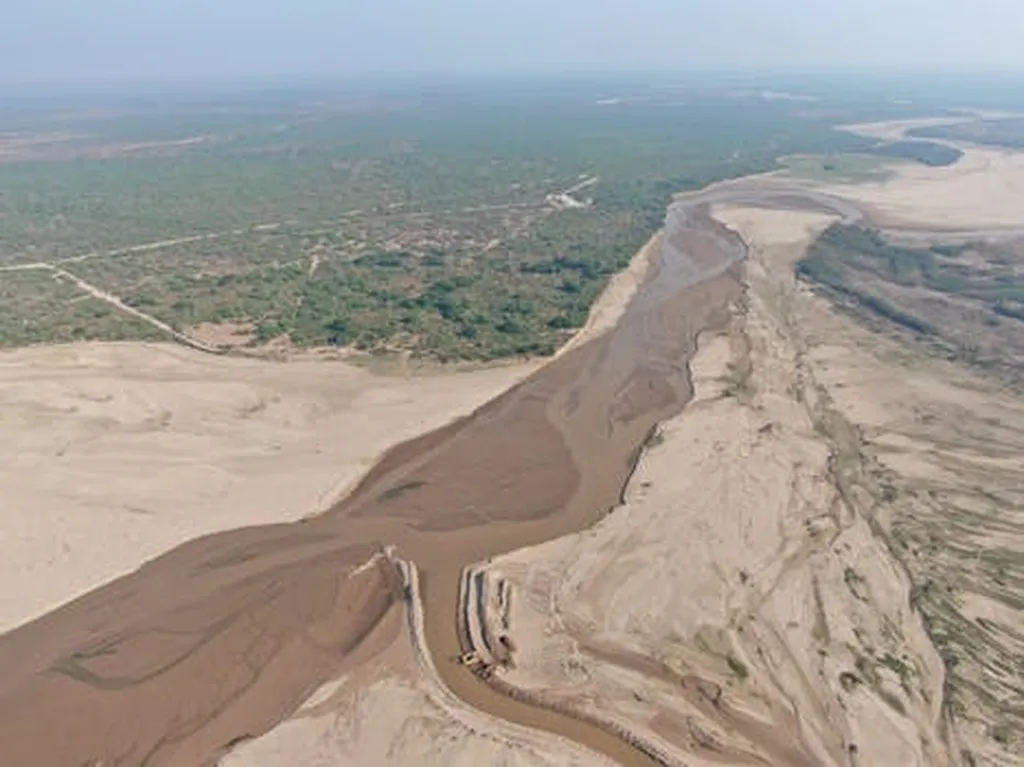In the heart of Guangxi, China, a critical study is shedding light on the delicate balance of carbon storage in one of the region’s most ecologically fragile areas. The Hongshui River Basin, a vast expanse of karst landscapes, is under the microscope in a recent study led by Hongbo Yan from the College of Geomatics and Geoinformation at Guilin University of Technology. The research, published in *Carsologica Sinica* (translated as “Karst Science”), offers a compelling look at how carbon storage in these vulnerable ecosystems has evolved over the past 30 years and what the future might hold under different development scenarios.
The Hongshui River Basin, covering over 50,000 square kilometers, is a mosaic of karst landforms characterized by thin, infertile soils and significant altitude variations. These features make the region’s ecology particularly sensitive to changes. “The ecological environment here is extremely fragile,” Yan explains. “Understanding the drivers of carbon storage changes is crucial for preventing ecological degradation and supporting sustainable development.”
Using the InVEST model, Yan and his team evaluated changes in ecosystem carbon storage for the years 1990, 2000, 2010, and 2020. The findings reveal a gradual increase in carbon storage from the southeast to the northwest, with a total increase of 71.59 million tons over the past three decades. “The carbon sink capacity of the basin has been stronger than its carbon source, particularly between 1990 and 2000,” Yan notes.
Looking ahead, the study employs the PLUS model to simulate future carbon storage trends under three scenarios: natural development, urban prioritization, and ecological protection. By 2030, carbon storage is projected to reach 927.67 million tons under natural development, 914.84 million tons under urban development, and 930.71 million tons under ecological protection. “Under natural development and ecological protection scenarios, the carbon sink capacity will remain stronger than the carbon source,” Yan states. However, the urban development scenario paints a different picture, with a projected decrease of 5.14 million tons. “Urban expansion leads to a reduction in forest land, which significantly impacts carbon sequestration,” Yan warns.
The study also identifies land use as the primary driving factor influencing spatial heterogeneity in carbon storage, with an explanatory power of 0.833. The interaction between land use and the annual average NDVI (Normalized Difference Vegetation Index) further amplifies this effect. “The specific combination of land use, NDVI, and other factors like temperature, rainfall, elevation, and population density will influence the spatial distribution of carbon storage,” Yan explains.
For the energy sector, these findings are particularly relevant. As the world grapples with climate change and the need for sustainable energy solutions, understanding carbon storage dynamics in vulnerable ecosystems like the Hongshui River Basin is crucial. “This research provides significant theoretical and data support for the sustainable development of carbon storage within ecosystem services,” Yan says. “It will assist in formulating more effective ecological protection and resource management policies aimed at enhancing the carbon sink capacity of the ecosystem.”
The implications for commercial impacts are substantial. Energy companies operating in or near karst areas must consider the delicate balance of carbon storage and the potential consequences of urban expansion. By integrating these findings into their strategies, they can contribute to environmental health and sustainable development while mitigating ecological degradation.
As the world continues to seek sustainable energy solutions, studies like Yan’s offer valuable insights into the complex interplay between land use, climate factors, and carbon storage. By understanding these dynamics, we can better navigate the challenges of climate change and work towards a more sustainable future.

